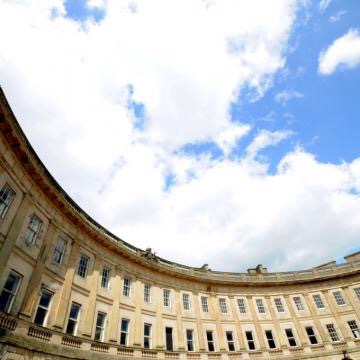The much anticipated £46million project to restore Buxton’s historic Crescent to full use as a thermal spa, 5-star hotel and heritage centre is today finally underway as contractors move on-site.
Contractors Manchester and Cheshire Construction Company have been selected to carry out the refurbishment of the Grade II-listed Pump Room which will become an interactive visitor centre, tearoom and heritage experience.
Amongst the first tasks are external repairs and the refurbishment of the interior including extensive repairs to the decorative marble cladding and the supply of natural thermal mineral water. This will allow for the building to be used as a temporary information point whilst work on the Grade I listed Georgian Crescent takes place.
Councillor Tony Kemp, Deputy Leader of the Borough Council and Executive Councillor for Regeneration, said: “This is a momentous day for the Crescent project, the town of Buxton, and the High Peak and wider region. It marks the start of the rennaisance of these iconic building which will cement Buxton’s place as England’s leading spa town.
“It has been a long time coming but we are finally able to welcome the contractors on site and I know that the very many residents and supporters of Buxton will share my delight that work is now underway.”
The flagship development is being funded by a £23.8m grant from the Heritage Lottery Fund (HLF), alongside the funding from High Peak Borough Council, Derbyshire County Council, Historic England, developer Buxton Crescent Hotel and Thermal Spa Co Ltd.
The project will transform the historic Crescent to provide a 79 bedroom 5-star spa hotel incorporating the neighbouring natural baths, state-of-the-art natural thermal mineral water spa and Six specialist boutique shops.
The Crescent was the centrepiece of the 5th Duke of Devonshire’s scheme to create a fashionable spa in the North of England. It was designed by John Carr of York and constructed 1780-89 to provide an assembly room, two hotels (some of the first purpose-built hotels in the country) and six lodging houses. One of the hotels closed in the early part of the last century. It became County Council offices and the town’s library in 1970 before becoming vacant in 1992. The other hotel (the St Ann’s) closed in 1989 and has remained empty.
The Natural Baths evolved over many centuries and occupies the site of the Roman baths situated over the main mineral water spring. The current building was constructed in 1853 to the design of Henry Curry but was altered in the 1920s. It was partly refurbished as the tourist information centre but the majority of the building has been empty since 1972. Henry Curry built the Pump Room for the 7th Duke of Devonshire in 1894. It was last used to ‘take the waters’ in the 1970s.
Derbyshire County Council’s Deputy Cabinet Member for Strategic Policy, Economic Development and Budget, Councillor Ron Mihaly, said: “The restoration of the Crescent is the cornerstone of the heritage-led regeneration currently revitalising the High Peak which will breathe new life into Buxton and attract visitors to Derbyshire from across the world. The economic benefits will be felt for very many years to come and this wonderful building will have been saved for future generations to enjoy.”
Developer Trevor Osborne added: “We all share the excitement and enthusiasm of all those people who have been waiting for this day and it is great to see work starting. We expect the Pump Room project to take around six months and the main contract on the Crescent should begin as this finishes so contractors should now be on-site until all of the building works are complete.”
Jonathan Platt, Head of HLF East Midlands, said: “This is a fantastic day for the Crescent and Buxton as a whole. The start of work today is a milestone that marks the start of a whole new chapter in what is one of the most important Georgian buildings in the country, and it is the last piece in the puzzle of the reinvention of Buxton as a tourist destination. This project is incredibly exciting and of tremendous importance to the whole of Derbyshire’s heritage and economy and that’s why we are supporting it with one of our biggest grants. Special thanks must go to National Lottery players for making this possible.”
In 2013, HLF announced new research showing that heritage-based tourism is worth £26.4billion to the UK economy – £5.8bn higher than the previous estimate published in 2010.







